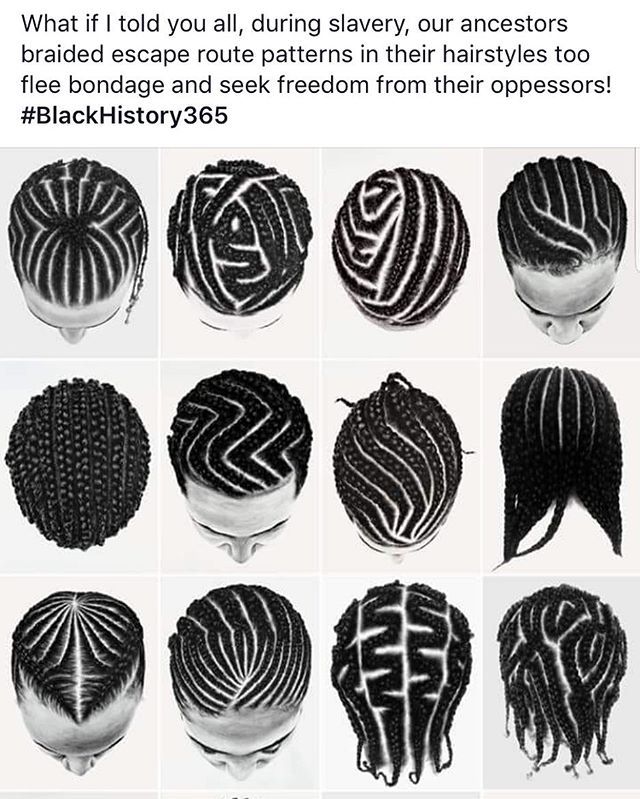Cornrows And Slavery: A Historical Perspective
Cornrows, a traditional African hairstyle, hold deep cultural significance and historical roots in the context of slavery. This intricate braiding technique has been passed down through generations, symbolizing identity, resistance, and resilience among enslaved Africans. In this article, we will explore the origins of cornrows, their evolution through the centuries, and the importance of maintaining this cultural heritage in contemporary society.
The history of cornrows is intertwined with the story of African people and their struggles. As enslaved individuals were forcibly brought to the Americas, they carried their traditions with them, including their hairstyles. Cornrows served not only as a means of personal expression but also as a practical solution for managing hair in a harsh environment. This article will delve into the various aspects of cornrows, including their cultural significance, techniques, and modern adaptations.
In our exploration, we will also consider the role of cornrows in contemporary discussions about race, identity, and cultural appropriation. The resurgence of interest in natural hair and protective styles has sparked conversations about the importance of honoring the heritage of cornrows and recognizing their historical context. Join us as we unravel the rich tapestry of cornrows and their connection to the legacy of slavery.
Table of Contents
- The History of Cornrows
- Cultural Significance of Cornrows
- Techniques for Creating Cornrows
- Modern Adaptations of Cornrows
- Cornrows and Identity
- Cornrows in Pop Culture
- Controversies Surrounding Cornrows
- Conclusion
The History of Cornrows
Cornrows have a rich and complex history that dates back thousands of years. Initially, this hairstyle was prevalent among various African ethnic groups, each with its unique styles and meanings.
The Origins of Cornrows
Research indicates that cornrows originated in Africa, where they were used to signify social status, age, and marital status. The intricate patterns and styles varied from one tribe to another, making them an essential aspect of cultural identity.
Cornrows During Slavery
When Africans were enslaved and brought to the Americas, they continued to create cornrows as a way to maintain their cultural identity amidst the brutality of slavery. The hairstyle allowed enslaved individuals to express their heritage and resist the dehumanization they faced.
Cultural Significance of Cornrows
Cornrows are more than just a hairstyle; they are a symbol of heritage and resistance.
Symbol of Resistance
Throughout history, cornrows have represented resistance against oppression. Enslaved Africans used their hair as a canvas to communicate messages of hope and strength. The act of braiding hair itself became a form of rebellion against the oppressive system they were subjected to.
Identity and Community
Cornrows have played a crucial role in fostering a sense of community among individuals of African descent. This hairstyle serves as a visual reminder of shared history and cultural pride.
Techniques for Creating Cornrows
Creating cornrows requires skill and practice, but the process can be broken down into manageable steps.
Tools and Preparation
- Wide-tooth comb
- Hair clips
- Moisturizing products
- Hair extensions (optional)
Step-by-Step Guide
- Start by detangling the hair with a wide-tooth comb.
- Section the hair into small, manageable parts.
- Begin braiding from the scalp, adding hair from each section as you go.
- Continue braiding until you reach the desired length.
- Secure the end with a hair tie or clip.
Modern Adaptations of Cornrows
In recent years, cornrows have seen a resurgence in popularity, often adapted to fit contemporary fashion trends.
Celebrity Influence
Many celebrities have embraced cornrows, bringing them into the mainstream. This visibility has sparked interest in the cultural significance of the hairstyle.
Fashion Trends
Today's cornrow styles often incorporate colorful extensions, beads, and various patterns, showcasing the versatility of this traditional hairstyle.
Cornrows and Identity
Cornrows have become an essential aspect of identity for many individuals of African descent.
Personal Expression
For many, cornrows serve as a means of personal expression, allowing individuals to showcase their unique styles while honoring their cultural heritage.
Community and Belonging
Wearing cornrows fosters a sense of belonging within the African diaspora, connecting individuals to their roots and shared history.
Cornrows in Pop Culture
Cornrows have made significant appearances in pop culture, influencing music, fashion, and film.
Influence in Music
Musicians such as Beyoncé, Drake, and Aaliyah have popularized cornrows, further embedding the hairstyle into contemporary culture.
Representation in Film
Cornrows have also been featured in various films, highlighting their cultural importance and showcasing the beauty of African heritage.
Controversies Surrounding Cornrows
The popularity of cornrows has not come without controversy, particularly regarding cultural appropriation.
Cultural Appropriation vs. Appreciation
As cornrows have gained popularity outside the African community, discussions about cultural appropriation have emerged. It's essential to distinguish between cultural appreciation and appropriation to foster understanding and respect.
Impact on Identity
The commercialization of cornrows can sometimes dilute their cultural significance, leading to conversations about the importance of honoring their roots.
Conclusion
In conclusion, cornrows are a powerful symbol of cultural heritage, identity, and resistance against oppression. As we celebrate this traditional hairstyle, it is crucial to acknowledge its historical context and the struggles faced by those who wore it throughout history. By appreciating and honoring the significance of cornrows, we can foster a deeper understanding of cultural identity and promote respect for diverse traditions. We invite you to share your thoughts on this topic in the comments section below and explore more articles on our site.
Call to Action
If you found this article valuable, please consider sharing it with others who may be interested in learning about the significance of cornrows and their historical context. Join us in the conversation about cultural appreciation and respect for diverse heritage.
Thank you for reading, and we hope to see you return for more insightful articles!
Exploring The Life And Impact Of Shorty Bae
Tee Billz: The Journey Of A Music Manager And Entrepreneur
Discover The Benefits Of I Love Massage: A Comprehensive Guide


